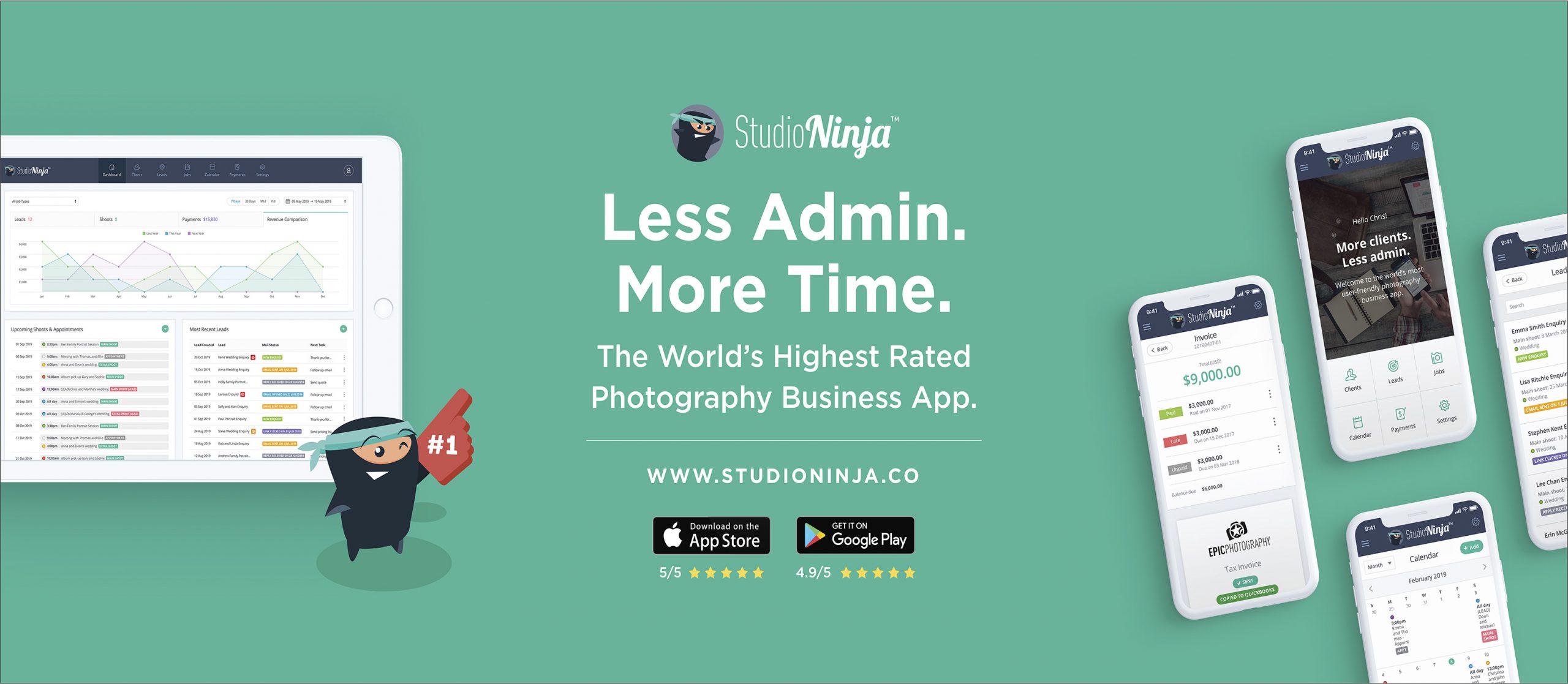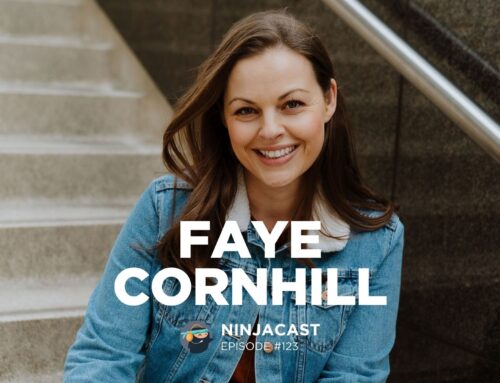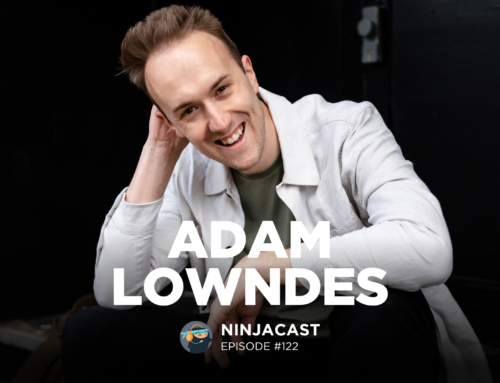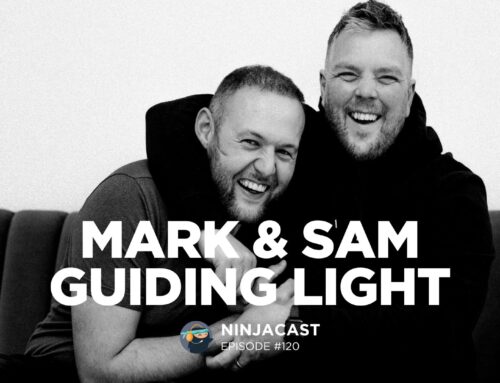040: Melissa Love – Why Your Website & Branding Matter & How To Implement a Killer Marketing Strategy
September 10, 2021
“If you feel you’re under pressure, sometimes that’s okay because from it something wonderful can come.”
MELISSA LOVE
Hey everyone! It’s Sally here, from Studio Ninja. Today’s episode is all about Melissa Love!
Check out some of the biggest points from Melissa’s interview below:
What are Facebook Ads and how can we utilise them?
The first thing is, most people’s experience with Facebook ads is quite negative. You’ll be tempted to boost a post, because Facebook and Instagram are always tempting you, “This post is performing better than 90% of your other posts, want to boost it?” And you’re like, “Hell, yeah. I’ll stick a tenner on that.” It just burns up in seconds, you don’t really get your results, it’s not measurable. And, you just think, “That was a waste of time. That didn’t really work.” That’s because you’re not giving Facebook enough information, so they’re taking an educated guess at what might work. Sometimes you might get lucky and it works, mostly it won’t. So, that’s fair enough, that’s their job, is to sell advertising space to you.
What you have got though in your business… I’d start with two things. What we want to do with Facebook ads is have certainty. So, what is certain is you know exactly who visits your website, because you can put the Facebook pixel in there to track them. So, easy one, where you can say, “Facebook, see all the people visiting my website? Show them this.” That’s easy, that’s a sure thing. You can just show them something that is relationship building, so you might show them a behind the scenes video of you doing a shoot, or [inaudible 00:14:26] they go, “Wow, that person really knows what they’re doing.” Or, you might redirect them to a blog post. It doesn’t have to even look like an ad, it just might be you talking to camera popping up in their stories. That’s an easy [inaudible 00:14:38], and I think that gives people confidence that the right people, and only the right people, are seeing what you want them to see. So, that retargeting is a great way to get started and boost your confidence.
The second thing is, you have to help Facebook by giving it the right information. If you can say to Facebook, “See all of the people, my best behaving clients…” If you’ve got a list of everyone who’s ever booked or inquired with you, you can take that list and you can feed it into Facebook and you say, “Facebook, can you go and find me people who aren’t these people but who look like them?” So, the better the data you put into Facebook, the better results you’ll get. So, as time goes on, for me, I’ve got quite a big list, so I’m constantly feeding little pots of people into Facebook. Everyone who’s purchased a template in the last year, that’s a little audience I’m going to create and send something to. Everybody who’s ever done this, people who have ever read this kind of blog post. I’ve got all these little audiences. Plus, everyone’s got people who have interacted with your Instagram in the last 180 days, or people who have interacted with your Facebook page. And, the key thing is not, “Visited,” but you can choose, “Interacted with.” So, people who have been taking action already are more likely to take action.
So, when you start to layer up these little audiences of real data, that’s when you start to get traction, if you create these lovely little pots of people that Facebook can use as a springboard. If you just leave Facebook to it, they’re going to go on what ever data they can scrape, but you haven’t created that data intentionally.

What is a funnel? How is the relevant to Photographers?
I think the word funnel just sounds really daunting, so the way I try and explain it to people is that I’ll say, “What’s your marketing strategy?” They go, “I post a lot on Instagram.” I’m like, “That’s nice, but that doesn’t sound like a strategy.” What you do when you’re just posting on social media is firstly, most people don’t post with intent. They’ll say, “Here’s a lovely picture of this awesome wedding I shot, everyone was really nice. How cool is the dress?” And, there’s no real strategy behind the post, it doesn’t achieve anything, it doesn’t speak to one of those three emotional pillars.
Let me give you an example. Somebody, one of their key stumbling blocks or things that they need to know before they book with you, they might want to know that you’re going to not miss any shots, you’re going to be the photographer who nails all the important shots. So, instead of posting a shot of let’s say a bride walking down steps to see her dad for the first time going, “Oh my God, look at this emotional moment, wasn’t it amazing?” You’d say, “I was so excited to capture this moment, I made sure I was in position at the bottom of the stairs so we didn’t miss a single frame of this incredible moment. We love to make sure we’re in the right place at the right time.” So, you can even see just off the top of my head the power of that message, versus the power of a very, “Hey, this is lovely,” a kind of fluffy message.
So, once you’re creating content with intent, then you can… So, that’s great. Let’s say you’ve sorted out your messaging. If you’re still sending that same message out to everyone, no matter what stage of the relationship they are with you, it’s just [inaudible 00:18:36]. Imagine going into a party, and you go in, you see everyone in the room, and some people you’ve never met before, some people you kind of know, and some people are your best mates. You’re not going to go in and go, “Hey, come in for a hug,” and people are like, “I don’t even know you,” and other people are like, “She’s my best friend, why is she being all [inaudible 00:18:53]?” So, the great thing about a funnel is you can tailor the content to a specific part of the relationship.
That’s why the word funnel is a funny word, because it sounds very linear, like it’s a system, it’s a machine you can just turn on. What actually happens is, you’ve got your great data that you can find to generate these pots of people, and what you’re trying to do is get as many of the right people into the topic or bring them into your audience. I think of it more like a target, where the nearer they get to the target bullseye that’s the hotter they get. So, when they first come in, they’re probably going to get to know you because they might see an ad, doesn’t have to be an ad, or they might see you on Instagram, or they might read a blog post, [inaudible 00:19:37] important. Where, they think, “Ooh, I like what this person’s got to say, I’m going to opt into something, I’m going to give them my email.” There’s a whole strategy around what is going to make someone give you their email.
Those people are going to get nurtured to where they’re a bit warmer. And, in that warm phase where they’re milling around in your audience, maybe they’ve joined your Facebook group or they follow you on social media. They’re getting some emails from you that are just saying, “Hey, have you thought about this when you’re planning your wedding, or your family shoot?” whatever it is. You’re sending them content which establishes you as the expert, as a person they can trust. Maybe they’re seeing some content off Facebook at the same time which does that same thing, you’re gently surrounding them. Then, what a lot of photographers do is they don’t ask for the sale. So, as people move through that relationship with you, they’re getting hotter and hotter, ready to book, and you’re like, “Hi.” Instead of going, “Would you like to work with me, because I’d love to get on a call with you and have a chat?”
You can run this on a time cycle. Mine runs for 21 days. So, first seven days they see nurturing content, the middle bit they see something saying, “You should be thinking about this.” The final seven days of the 21 days they see, “Do you want to join my membership? Do you want to do this? This is what it will feel like, this is behind the scenes.” So, these are completely different messages. And, it would be wrong for someone just coming in like, “This Melissa woman, what does she know about building websites or marketing?” It’d be wrong for me to be going, “Buy now, look behind the scenes.” It’d be so wrong. They need to go on that journey where they get to know you and trust you in the middle section. So, a funnel is really just showing people the right message at the right time.

What can our listeners do to their website TODAY, to make a difference?
My best advice is to give you a little exercise to do, which is to audit your own website. What often happens is people decide to get a new website, and especially people who do it yourself who buy a template, you’re super excited. So, you just dive straight in there and you start replacing the photos and you start adding your copy, but maybe your copy is a bit too big to fit into the template area copy, so you shove it all in there anyway. The homepage is looking okay, you think it looks okay, maybe you’re not quite as excited. So, you go onto the about page, you spend a ton of time there. Then, you have to do your portfolio, and you’re onto some really pages like info, and F&Q, and pricing. By the time you get to the contact page you’ve completely lost the will to live and you’re like, “Ah, let’s call it done.”
What happens is we lose the attention to detail and the focus which makes a really polished website. When you look at a website and you think, “Wow, this is slick,” it’s because someone has been consistent, they’ve stuck to the brand guidelines, and they’ve done it every single time. There is nothing out of place, every button works and looks the same. Every image works in the same way. You have to have that consistency if you want to have that knockout look and feel. So, I would just suggest starting with your homepage, and what I’d say is, when it first loads, what you can see that loads in the window, which we call above the fold, is there visual impact? Is it obvious what you do? Is there a statement on your homepage that says, “I do this for this kind of person, this is how I do it differently.” Have you got a positioning statement? A wedding photographer, [inaudible 00:25:05] SEO text which I often see people [inaudible 00:25:07], I want to see a really emotive positioning statement which directly addresses the people they’re trying to attract.
And then, what you have to do is start to look for consistency. This is a challenge I do with people when I’m doing live training. I say, “Go to your website now, and I want you to find something that’s inconsistent.” You haven’t changed all the fonts, maybe they left all of the default fonts in there from a template that’s snuck in there but you didn’t quite spot it. Maybe you’ve got three different types of headings being used that look similar but they’re not being used the same, so it’s kind of jarring. Maybe you’ve got buttons that don’t look the same. Maybe you’ve got not enough space. Is there enough white space for people to be able to scroll and appreciate the content?
I can do it on my own website now, and I’ve just redone my website, I bet if I looked I’d find loads of inconsistencies. It’s completely normal, by the way, because websites evolve overtime, or we get fatigued by doing such a big job. So, go and audit your website.
The next step from that is really pulling out all the elements you’ve used and really scrutinizing them. And, I really recommend people make a brand guide so they have the guide which they don’t deviate from. By the way, I never just open a browser and start designing a website, I will do the brand guide, then I will lay out a style area where we test and play with how things should look together, what’s the heading going to be, what’s the subheading, what’s a button going to be, where will I use this decorative element? Don’t go near a website until I’ve done that. And then, I will have also designed the homepage out on paper as well, fully designed, before I go near a website browser. You can do all of these things, it’s very easy, I’ve got a whole process. It’s mostly on my blog or I’ve got a workshop, but you can do all of these things. And, the difference it makes is enormous, because that stops you from what I call panic designing, where you’re like, “I don’t know how I’m going to make this all fit together, so I’ll just stick it in there anyway because I don’t know what else to do.” So, do your audit. “Have I got too many fonts? Can I strip this back? Can I make this more cohesive? Is there more polish I can give it?” It’s boring, but it works.

Thank you!
Thanks again to you all for joining us and a huge thanks to Melissa for joining us on the show!
If you have any suggestions, comments or questions about this episode, please be sure to leave them below in the comment section of this post, and if you liked the episode, please share it using the social media buttons you see at the bottom of the post!
That’s it for me this week, I hope you all enjoyed this episode.
See you soon,
Sally
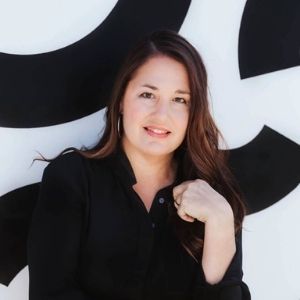
About Melissa Love
Melissa Love is a graphic designer and website developer who works with creative professionals to help them develop a strong brand presence and stand out in a crowded market. She is passionate about affordable design for small businesses and founded The Design Space to help photographers, designers and other makers grow their businesses on and offline. Based in the UK, she is also a keen photographer.
